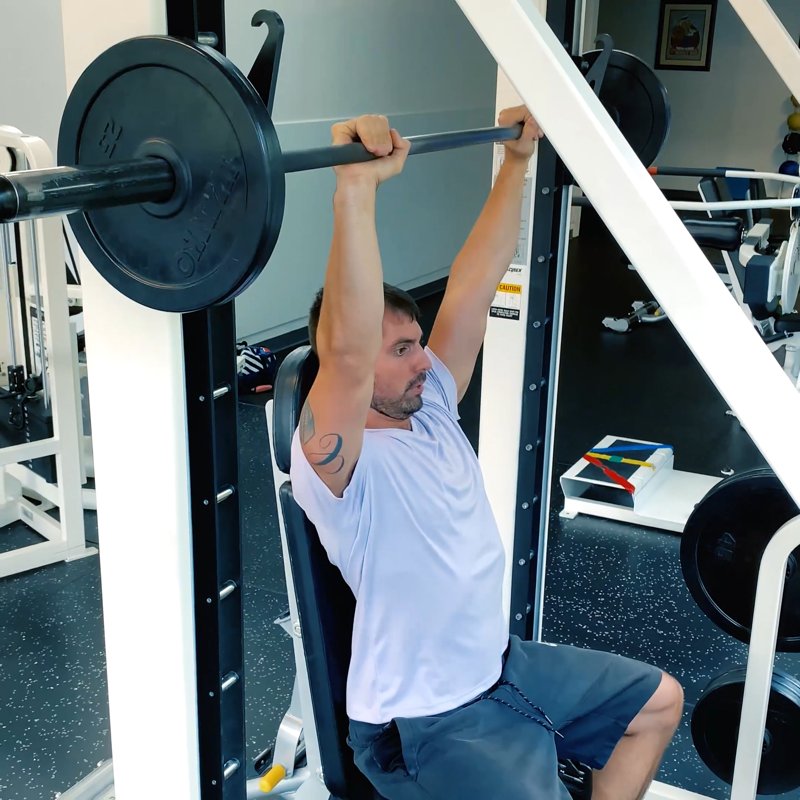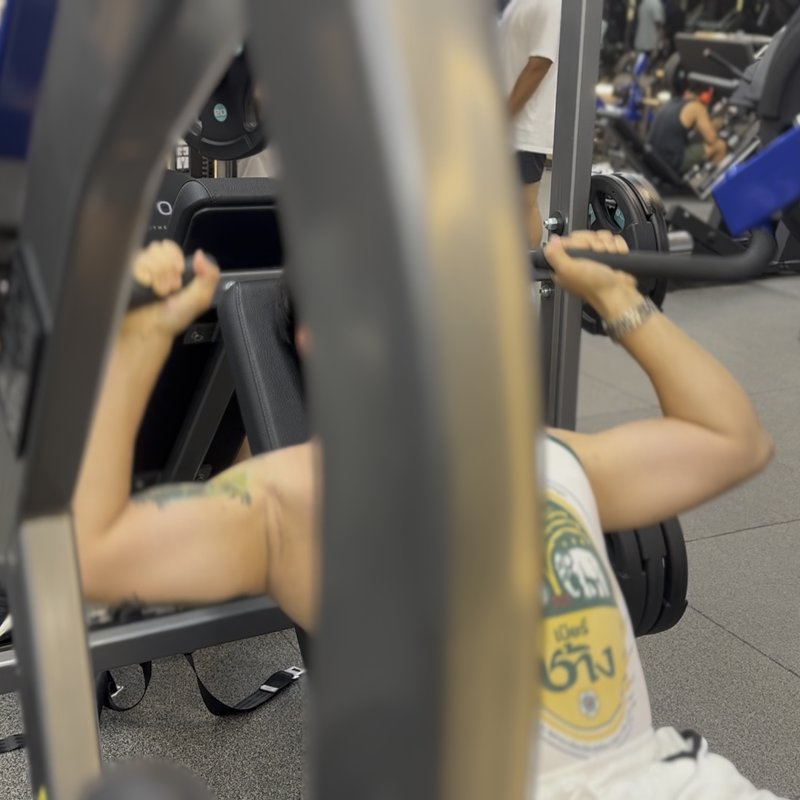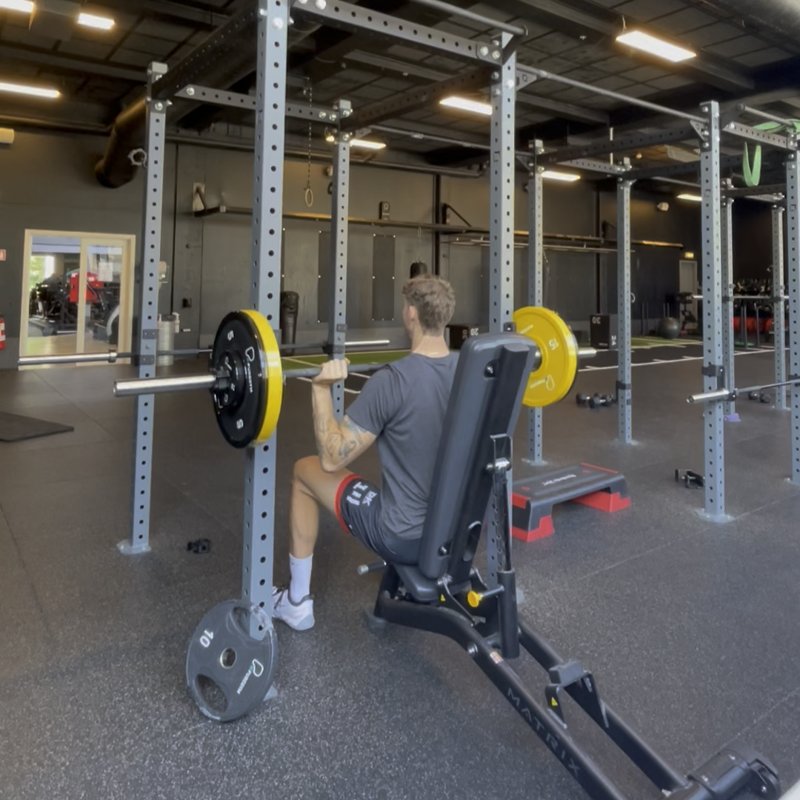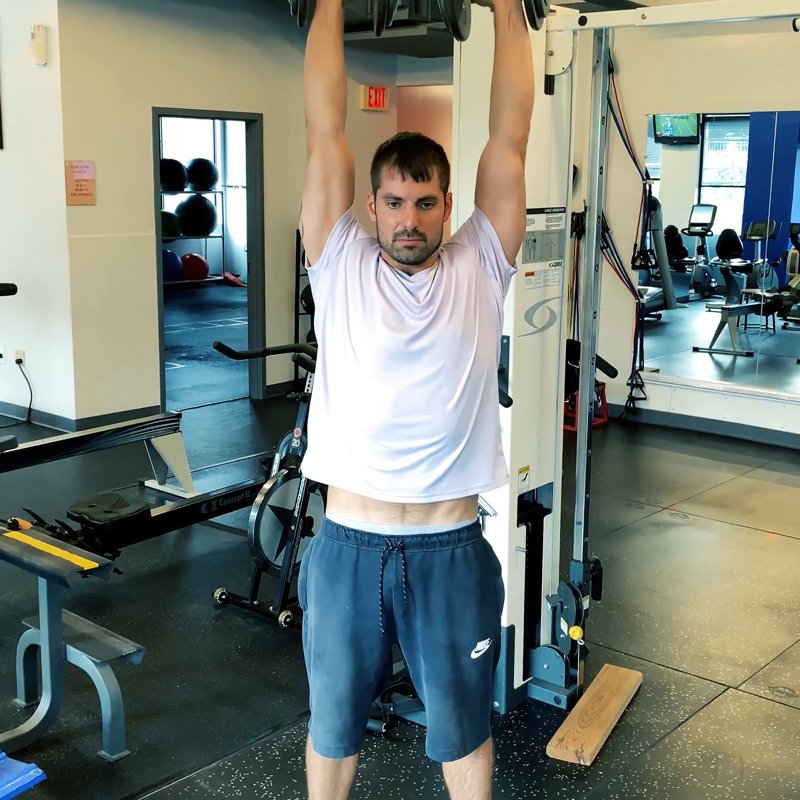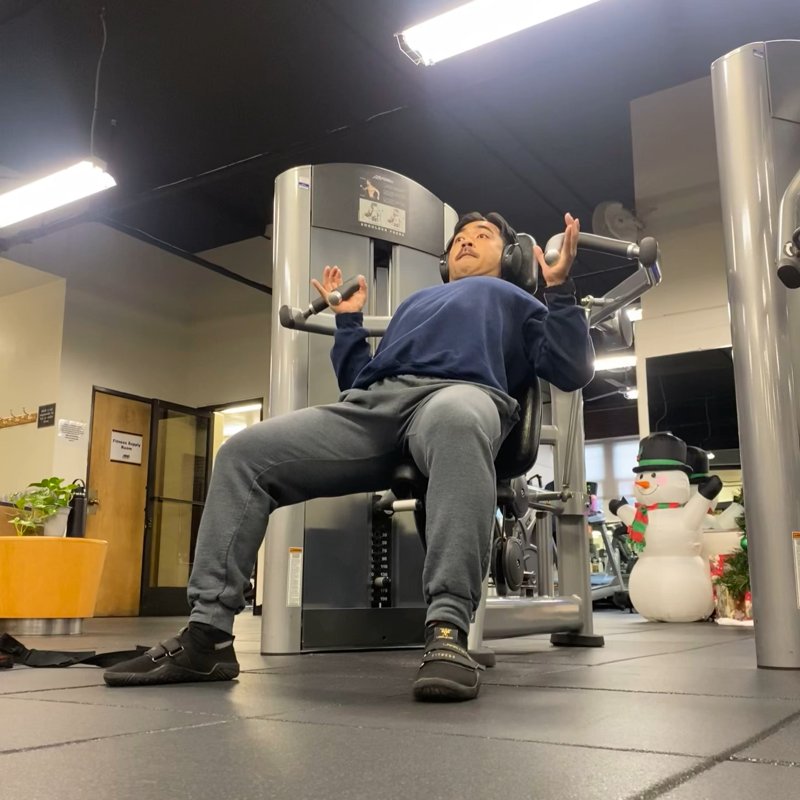Shoulder Press Machine: The Ultimate Guide
The Shoulder Press Machine is a guided resistance exercise that primarily targets the deltoid muscles of the shoulders, along with the triceps and upper chest, providing a stable and controlled environment for vertical pressing movements.
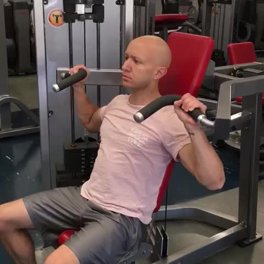
Quick Facts
Key Benefit
Controlled shoulder development with reduced stabilization demands
Primary Muscles
Anterior Deltoids, Medial Deltoids, Triceps
Secondary Muscles
Abdominals, Pectoralis Major, Pectoralis Minor, Traps
Equipment
machine
Difficulty
Beginner
Type
Strength
In This Guide
Ready to master the Shoulder Press Machine?
Track your progress, see improvements over time, and build strength consistently.
Download GravitusThe Shoulder Press Machine provides a structured approach to overhead pressing that offers distinct advantages for shoulder development. This guided-path exercise allows you to target the deltoid muscles with reduced stabilization demands compared to free-weight alternatives. For beginners, the shoulder press machine offers an excellent introduction to overhead pressing movements. The fixed path helps establish proper movement patterns and builds foundational strength before progressing to more complex free-weight exercises like dumbbell or barbell overhead presses. Those with shoulder mobility limitations or minor injuries often find machine-based shoulder pressing more accessible, as the predetermined path reduces stress on the shoulder joints while still effectively targeting the deltoid muscles. Even experienced lifters benefit from incorporating the shoulder press machine into their routine. The stable environment allows for high-intensity techniques like drop sets, forced reps, or training to muscular failure without requiring a spotter. This controlled approach also enables focused concentration on the target muscles without concern for balance or coordination. While the shoulder press machine should not completely replace free-weight training for most trainees, it serves as a valuable complement to a comprehensive shoulder development program, offering unique advantages in safety, control, and muscle isolation.
Benefits of the Shoulder Press Machine
The shoulder press machine offers several distinctive advantages for shoulder training.
Reduced Injury Risk
The guided motion minimizes potential for technique errors that could strain the shoulder joints, making it a safer option for many trainees.
Isolation
The fixed movement path reduces the need for stabilizer muscles, allowing greater focus on the deltoids themselves.
Beginner-Friendly
Provides an accessible entry point to overhead pressing movements without the coordination demands of free weights.
Progressive Overload
Allows for precise weight increments and consistent movement patterns, making progress tracking straightforward.
Intensity Techniques
Facilitates advanced training methods like drop sets or training to failure safely without a spotter.
Proper Form & Technique
Setup
- Adjust the seat height so that the handles align approximately with your shoulders when seated.
- Set the weight to an appropriate level that allows proper form throughout the full set.
- Sit with your back firmly against the backrest, maintaining good posture with a neutral spine.
- Place your feet flat on the floor or on the footrests for stability.
- Grasp the handles with a comfortable grip, palms typically facing forward or in a neutral position depending on the machine design.
- Position your elbows at approximately 90 degrees, aligned under or slightly in front of the handles.
- Engage your core and retract your shoulder blades slightly for stability.
Movement
- Take a deep breath and brace your core before initiating the press.
- Exhale as you push the handles upward following the machine's path.
- Press until your arms are nearly straight, avoiding forcefully locking out the elbows.
- Maintain contact between your back and the backrest throughout the movement.
- Hold the contracted position briefly at the top, focusing on squeezing your shoulder muscles.
- Inhale as you slowly lower the weight with control, returning to the starting position.
- Stop just before the weight stack touches down to maintain constant tension on the muscles.
- Repeat for the desired number of repetitions, maintaining proper form throughout.
Key Form Tips
Head Position
Keep your head neutral, facing forward with chin slightly tucked, not extended upward.
Spine Alignment
Maintain a neutral spine position with natural curves; avoid excessive arching of the lower back.
Shoulder Blades
Keep shoulder blades stable and slightly retracted, not elevating toward your ears during the press.
Elbow Path
Follow the natural path of the machine without forcing your own trajectory, which could strain the joints.
Range of Motion
Use a complete range of motion without compromising form; the handles should lower to approximately shoulder level.
Muscles Worked
Primary Muscles
- Anterior Deltoids: The front portion of the shoulder muscles is the primary mover in this pressing motion, responsible for lifting the arms forward and upward.
- medial deltoids: The middle portion of the deltoids assists significantly in the middle range of the overhead pressing movement.
- triceps: The three-headed muscle on the back of the upper arm extends the elbow during the pressing motion.
Secondary Muscles
- pectoralis major: The upper portion of the chest muscle assists in the beginning phase of the pressing movement.
- pectoralis minor: This muscle along the ribs helps stabilize the shoulder blade during the overhead pressing motion.
- traps: The upper portion of the trapezius muscle assists in stabilizing the shoulder girdle during the movement.
- abdominals: The abdominals and lower back muscles work isometrically to maintain proper posture throughout the exercise.
Common Mistakes and How to Fix Them
Arching the Lower Back
Excessive arching increases pressure on the spine and reduces shoulder muscle engagement. Maintain core engagement and keep your back pressed against the backrest throughout the movement. Consider slightly tucking your pelvis to help maintain a neutral spine position.
Incomplete Range of Motion
Not lowering the handles enough or not pressing to near full extension limits muscle development. Begin with the handles at approximately shoulder level and press until arms are nearly straight (without forcefully locking elbows) to work through a complete range of motion.
Shrugging the Shoulders
Elevating the shoulders toward the ears during the press shifts emphasis away from the deltoids. Keep your shoulders down and back throughout the movement, consciously depressing them away from your ears, particularly during the pressing phase.
Using Momentum
Jerking or bouncing the weight reduces muscle tension and effectiveness. Control the weight throughout the entire range of motion, especially during the lowering phase, and consider a brief pause at the bottom before pressing upward again.
Head Position Forward
Jutting the head forward can strain the neck and reduce stability. Keep your head in a neutral position aligned with your spine, with your neck long and chin slightly tucked rather than protruding forward or looking upward.
Shoulder Press Machine Variations
Technique Variations
-

Single-Arm Shoulder Press Machine
Using one arm at a time to identify and address strength imbalances while increasing core stabilization demands.
-
Alternating Shoulder Press Machine
Pressing one arm at a time in an alternating fashion while the other arm maintains the starting position.
-
Narrow Grip Shoulder Press Machine
Using a closer hand position if the machine allows, shifting more emphasis to the front deltoids and triceps.
Intensity Variations
-

Tempo Shoulder Press
Manipulating the speed of different phases (e.g., 3 seconds up, 1 second hold, 3 seconds down) to increase time under tension.
-

Drop Set Shoulder Press
Performing a set to near failure, quickly reducing the weight, and continuing for additional repetitions without rest.
-

Partial Repetition Shoulder Press
Working through a limited range of motion (either top half or bottom half) to focus on specific portions of the strength curve.
Frequently Asked Questions
The shoulder press machine and free weight overhead pressing each offer distinct advantages. The machine version provides a fixed path with reduced stabilization requirements, making it excellent for beginners, those with certain mobility limitations, or for focused muscle development with less technical demand. Free weight versions (like dumbbell or barbell overhead presses) engage more stabilizer muscles, develop greater neuromuscular coordination, and generally have better carryover to real-world strength. For optimal shoulder development, including both machine and free weight variations in your program is ideal, as they complement each other well. If athletic performance or functional strength is your primary goal, prioritize free weights but use machines as a supplementary tool. If your focus is purely on muscle development with minimal injury risk, machines can be emphasized more heavily.
For general fitness goals, training shoulders 1-3 times per week is typical, with the shoulder press machine potentially included in each of these sessions. For beginners, twice weekly training with at least 48 hours between sessions allows sufficient recovery while providing stimulus for progress. More advanced trainees might use the machine as part of a split routine, perhaps as their primary shoulder movement in one session and as an accessory or burnout movement in another. The frequency can be adjusted based on your recovery capacity and overall training volume - shoulders are smaller muscle groups that can typically handle more frequent training than larger muscle groups like legs. Listen to your body, as proper recovery between shoulder-focused workouts is essential for progress and injury prevention.
This depends on your specific goals. If building pressing strength is your primary objective, perform the shoulder press machine early in your workout when energy levels are highest. If your goal is muscle hypertrophy with pre-exhaustion, you might perform isolation exercises like lateral raises first, then move to the shoulder press machine. For maximum overall shoulder development, a common approach is to begin with a compound movement (whether machine or free weight pressing), followed by isolation exercises for specific deltoid heads. If you're using the machine specifically for safety reasons or rehabilitation, it may be best to perform it first when your focus and technique are sharpest. The sequence should ultimately align with your individual priorities - strength, hypertrophy, safety, or specific muscle targeting.
Yes, you can certainly build substantial shoulder development using primarily the shoulder press machine, provided you apply principles of progressive overload, proper form, and adequate training volume. However, for truly complete shoulder development, incorporating a variety of exercises that target all three heads of the deltoid (front, side, and rear) is recommended. The shoulder press machine primarily emphasizes the anterior (front) and to some extent the lateral (side) deltoids, but has minimal effect on the posterior (rear) deltoids. For balanced development, consider complementing the machine press with exercises like rear delt flies, face pulls, or reverse pec deck movements. That said, if equipment limitations or other factors restrict your options, focusing on progressive improvement with the shoulder press machine alone will still yield significant results for the muscles it does target.
Video Demonstrations
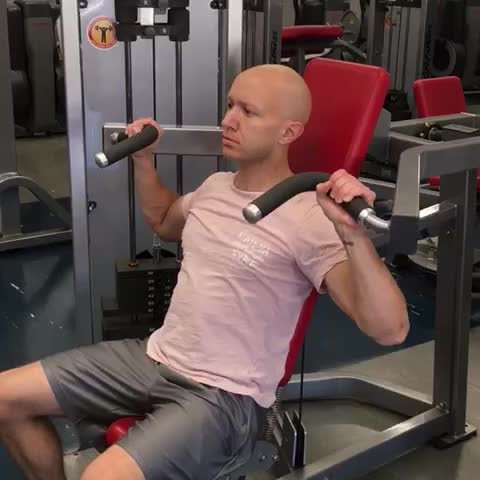
Log in to watch video demonstrations
Login to Watch3 video demonstrations available
Find more video demonstrations in the Gravitus app
Tips from the Community
-

Explosive movements
Track your progress with Gravitus
Download Gravitus to log your workouts, track your progress, and join a community of fitness enthusiasts.

Helpful Resources
One Rep Max Calculator
Find your one rep max for any exercise without maximal testing. Essential for developing effective strength training programs.
Calculate 1RMWorkout Programs
Follow structured workout programs created by fitness professionals to maximize your strength and muscle gains.
View Programs